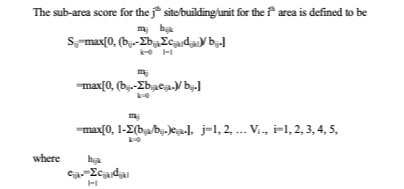Even though MB&A has been in the inspections, audits and compliance space for the past 10years, we’ve stuck to our core principles throughout. By maximizing the flexibility of our data collection engine, we have ensured that all our customers have seen great benefits from the advances that we’ve made on key use cases. From the moment we rolled out our “assess anything” functionality, we realized that our enterprise customers often have significant investments tied up in their existing infrastructure.
Now, after 10 years’ worth of managing similar implementations for a variety of customers, we’ve decided to depart from our origin story, or at least take a side-step. On September 15th, we released an “Extension Package” tailored to the specific needs of our inspections customers.
So, what is an extension package, anyway?
It’s a package, component, or set of components that adds to the functionality of a managed package. As the word implies, an “extension” is added to an organization’s base-managed package. So if you have our ExAM data collection package, the ExAM4Inspections extension includes components that you can use to perform specific functions around inspections, management of deficiencies, and sampling. Allow me to explain below.
Inspections Object
The “inspection object” consolidates all the information surrounding a particular inspection. For years, our customers have leveraged our “assignments object” for this purpose. While this is effective, the inspection object we enable:
- Multi-Target Inspections for users who need to consolidate many inspections. Consider the inspection of a property with multiple buildings, units, and areas, or a hospital with a large campus. This feature allows for easier reporting, enables large teams to work in unison, and delivers easier reporting and analyses.
- A Separation of Duties to protect the “assignment object” for its intended purpose. Now, users can free this object to manage a diverse series of complex tasks across the enterprise, including multi-assignment inspections, work orders, permitting, issue management, and the digitization of forms.
- An Easier Path to complex, incremental, or iterative assessments and inspections.
Deficiencies Object
The “deficiency object” shines during complex inspections, because it enables users to maintain a slice in time record of an assessment separately from the lifecycle of the deficiency that was noted. With a standardized deficiency object, customers can address these kinds of scenarios out of the box. An added bonus is that it enables standard interfaces to other capabilities we offer around managing work orders and resolving deficiencies.
The top three benefits to having this in the extension package are:
- Deficiency Life Cycle Management makes auditing, metric management, and SLA management much, much easier. Specifically, it enables “answer records” to establish the condition of an assessable object at a particular point in time, while enabling “deficiency records” to manage the remediation of a particular deficiency through a life cycle.
- Work Order Interface enables easy integration with ExAM work order capabilities. After all, a deficiency must typically be addressed by an organization, and there may be multiple inspections, work orders, or other activities involved in that effort.
- Field and Page Layout Simplification reduces the need for record typing, page layout proliferation, and overloading the “answer object” with fields.
Sampling
Almost all of our enterprise inspection customers use some form of sampling to determine how they inspect or audit their portfolio, support sampling of the inspections they’ve performed to ensure their quality, or both.
By including national standards for inspection sampling, as well as base sampling functionality, we can make many of these use cases turnkey. In the case of complex standards – like Uniform Physical Condition Sampling – we take some pretty complex math and make it accessible for our customers.
Sample Sampling Math
The ExAM4Inspections extension package sampling tools will include:
- Basic Sampling. This is pretty straightforward. Choose an object type, set your filter parameters, the percentage of the sample size against the portfolio, and the type of assignments you want to generate against the resulting sample.
- Uniform Physical Condition Sampling (UPCS). This is a national standard that supports sample generation for properties, buildings, and units in accordance with HUD’s standards.
- National Standards for the Physical Inspection of Real Estate (NSPIRE) Sampling. While this is currently based on the UPCS sampling model with only differences in inspection templates, we expect that to change over the next several years. The main benefit here is the automatic application of NSPIRE’s inspection templates to accommodate the fact that fewer different inspection types are being performed.
What’s Next?
We released the ExAM4Inspections extension package this month (September 2021), with several customers. In the near term, we will focus on building out additional turnkey sampling standards and approaches, as well as more integration with our assets and inventory products and work order capabilities. Interested in learning more? Reach out at info@exam4Inspections.com.




